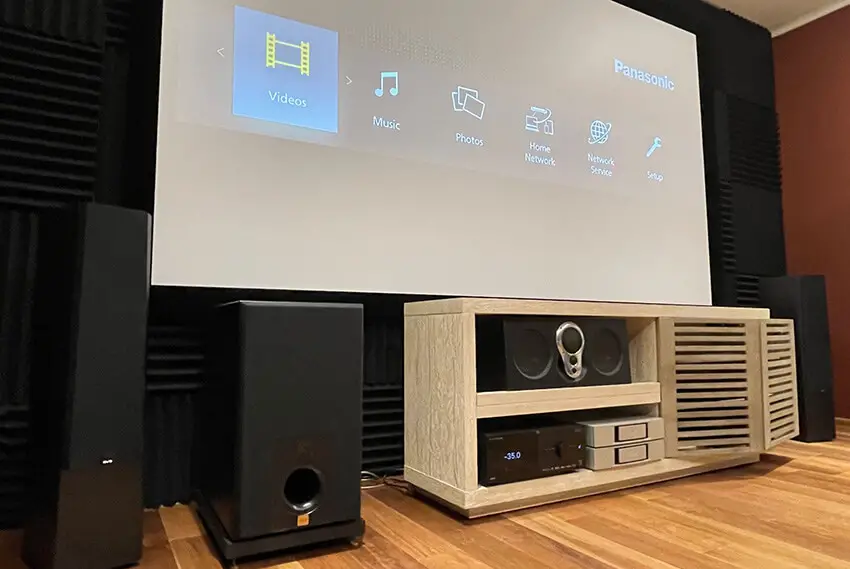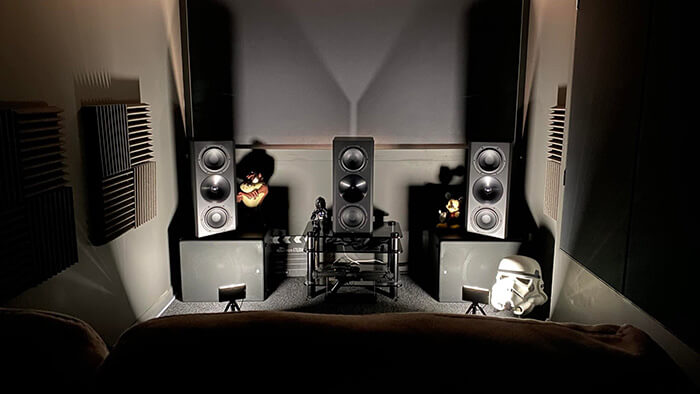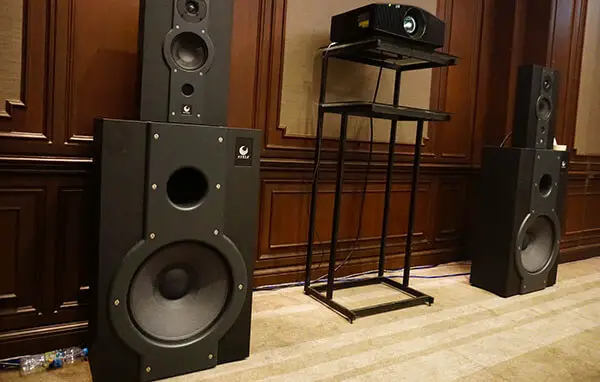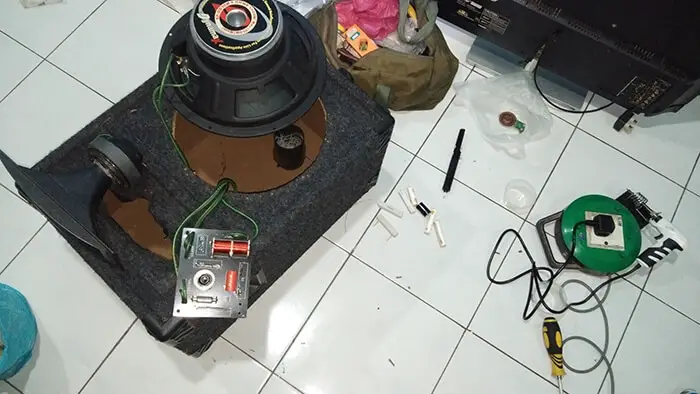There is no exact good RMS for every type of speaker. In brief, depending on the total speaker rating, a good RMS rating would be between 30 and 400 watts. For example, if your total RMS speaker rating is 200 watts, you will need at least 60 to 200 watts of RMS rating, though there are a lot of factors in these.
Besides, the suitable RMS depends on a few factors, such as the number of speakers, each and total speaker rating, sensitivity, position, listening level, loudness, and your preference.
I will start with the fundamental difference between the types of power difference and dive deep into the factors and how you can find a good RMS rating for your speakers.
Two Types of Power Rating
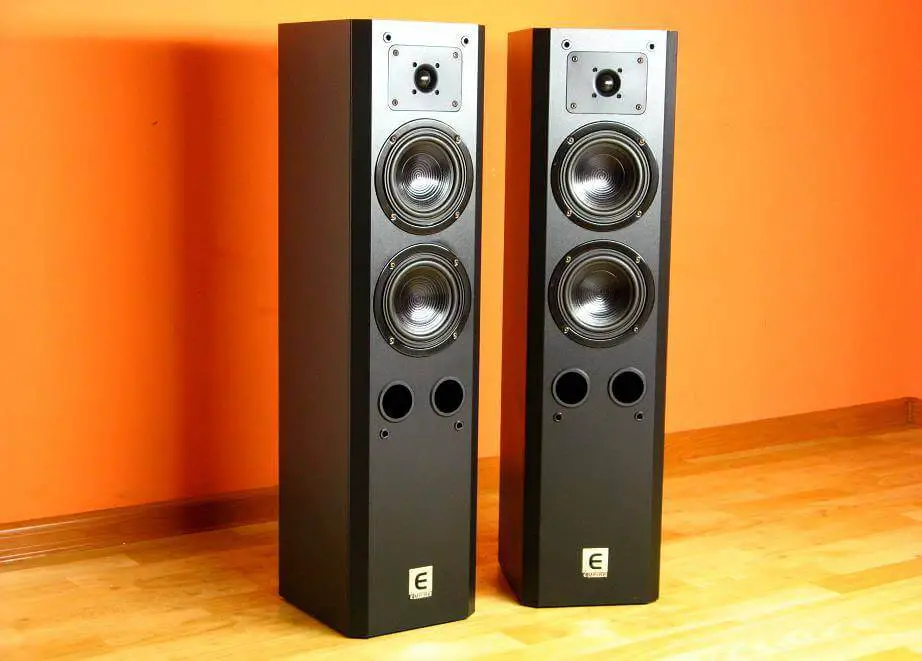
You might have already heard the terms RMS and Peak rating. To understand good measurement, you need to understand the difference.
Peak Rating: The peak rating indicates the highest power the speaker can handle without getting burned. And the period is limited. If the speaker has to take that amount of energy for more than that specific period, it will get burned there will be some issues such as overheating.
Besides, when a speaker receives too much power more than that peak amount, it affects the voice coil and sometimes results in burning the coil. The speaker’s coil will get burned if your amplifier’s power rating is close to the speaker’s peak power rating.
RMS (Root-Mean-Square) Rating: The RMS rating is called the Nominal rating too. When you run your speaker, it requires a certain amount of power to be going in there. Under typical situations, the speaker can run on a specific power rating or power. And that power is standard for that particular speaker that it can run on without getting fried.
If your speaker has a high power rating, it has a big voice coil. And the power rating depends on that voice coil. The bigger the voice coil is, the more power it requires and the more it can handle.
To find a good RMS for your speaker, you need to find an amplifier that can provide the same or more power or match the RMS rating.
Let’s see how you can measure that!
Should I Consider RMS Per Speaker or Pair?
The RMS rating is per speaker and not for the pair. The RMS rating indicates each speaker’s average capacity to run on regular use. For example, if your RMS rating is 50 watts, that speaker can absorb that much power when running.
And that rating is meant for EACH speaker, not PAIR. Depending on the number of speakers, the rating will vary. If the RMS rating for a speaker is 50, then for two, it will be 100 watts. So, the RMS will double or triple for the pair based on the number.
Here’s a table to better understand the RMS difference between a single and a pair of speakers.
| Speaker Model | RMS Rating | Per Speaker | Pair |
| BOSS Audio Systems BRS69 | 50 watts (Peak 120 Watt) | 50 watt | 100 watts |
| JBL GTO939 Premium | 40 watts (Peak 150 Watt) | 40 watt | 80 watts |
| 2 Kicker 43DSC69304 | 90 watts (Peak 360 Watt) | 90 watt | 180 watts |
And, of course, as mentioned, the peak watts are just for how much the speaker can take, not the optimal factor while calculating RMS.
How Do You Measure RMS?
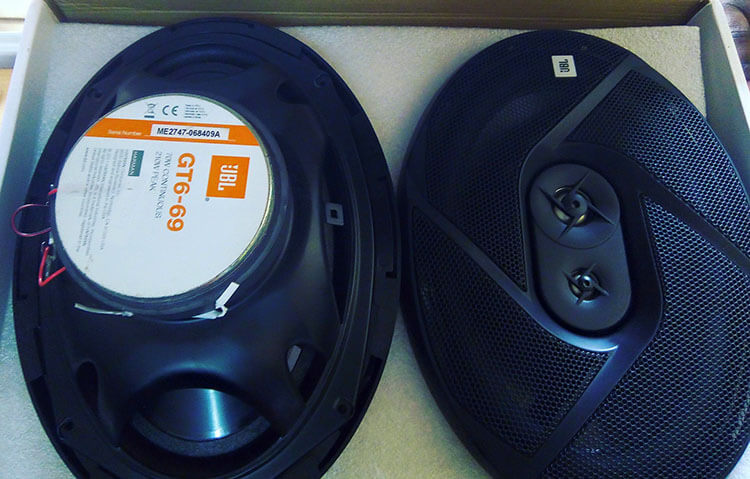
I will start with a real-life example. The JBL GTO939 has two types of power ratings written on the manual. The nominal or RMS rating is 100 watts, and the peak rating is 300 watts.
You need to find or connect the speaker to an amplifier that can provide a similar amount of power RMS rating, which is 100 watts.
On the other hand, if you connect an amplifier rated 300 watts, the speaker will have to deal with 300 watts which are 200 watts more than the nominal or regular RMS rating.
So, you need to get an amplified one that provides the same amount of power and not more than that, which is 100 watts.
But that’s an approximate amount. Your speaker can run on less power which is also a good RMS rating for speakers.
Sometimes, you might not find your speaker’s nominal or RMS rating. In those situations, you also need to find a good RMS rating. Let’s see how you can find that.
You can calculate the lowest good RMS power rating and the highest good RMS power rating. Here are the formulas;
To find the lowest / minimum good RMS rating = (Number of speakers × Nominal or RMS rating) × 0.3
To find the highest good RMS rating = (Number of speakers × Nominal or RMS rating)
So, as you know, JBL GTO939 has a 100 watts RMS rating. If you have one speaker, then, for this particular speaker, the lowest good RMS rating would be;
= (1 × 100) × 0.3 = 30 watts
And the highest good RMS rating would be = (1 × 100) = 100 watts.
Similarly, if you have two speakers, the lowest rating = = (2 × 100) × 0.3 = 60 watts, and the highest rating = (2 × 100) = 200 watts.
So, you need to find an amplifier that provides between 30 to 100 watts of power if there is only one speaker and 60 to 200 watts if there are two speakers.
For three speakers, the rating is between 90 to 300 watts, and so on.
Another example could be Sony XS-GTF6938. It has 50 watts nominal rating and 420 watts peak rating. For this speaker, if there are two speakers, the lowest good rating would be = (2 × 50) × 0.3 = 30 watts, and the highest rating would be = (2 × 50) = 100 watts.
And, you must never get an amplifier that can provide more than 100 watts, let alone match the peak rating, which is 420 watts. Here are more examples in the following table;
| Speaker | No Of Speaker | RMS Rating Per Speaker | Total RMS | Lowest RMS | Highest RMS |
| Infinity REF-9633IX | 1 | 100 watts | 100 watts | 30 watts | 100 watts |
| Alpine SXE-6926S | 2 | 45 watts | 90 watts | 27 watts | 90 watts |
| Kicker 43DSC69304 | 3 | 90 watts | 270 watts | 81 watts | 270 watts |
| Kenwood KFC 6996PS | 4 | 150 watts | 600 watts | 180 watts | 600 watts |
How to Converter RMS to Watts?
Sometimes you might not find the peak wattage in the speaker’s description. But it is essential to know the highest power your speaker can handle, so you can understand what amplifier wattage you need.
In that case, for these reasons, you need to know these. I will give you a real-life example. But first, we need to know the equation to convert the RMS to watts.
The formula is Watts = RMS Watts ÷ 0.707
Let’s take Polk Audio RC80i as an example. The RMS wattage for this is 40, and the peak is 100 watts.
So, the good RMS rating for this would be from (1 × 40) × 0.3) = 12 watts to (1 × 40) = 40 watts.
And, if I covert this, then the watts would be;
- Lowest Watts = 12 watts × 0.707 = 8.484 watts.
- Highest Watts = 40 watts × 0.707 = 28.28 watts.
Let’s see other examples in a table.
| Speaker | RMS (Lowest to Highest) | Watts (Lowest to Highest) |
| Infinity REF-9633IX | 30 to 100 watts | 21.21 to 70.7 watts |
| Alpine SXE-6926S | 27 to 90 watts | 19.08 to 63.63 watts |
| Kicker 43DSC69304 | 81 to 270 watts | 57.26 to 190.89 watts |
| Kenwood KFC 6996PS | 180 to 600 watts | 127.26 to 424.2 watts |
Now, that’s the RMS part for the speaker. But, we need to measure speaker watts for amplifiers.
How to Calculate Speaker Watts for Amplifier
You can measure the speaker’s wattage within a few steps. Follow these, and you will know exactly how much power your speakers need.
- Every speaker comes with a manual or instruction book and cover. You need to get that.
- Find the RMS rating and peak rating from there.
- Then, you need to find the nominal impedance rating.
- Now, you need to select an amplifier that can provide at least double that nominal power rating and has more impedance level.
- Besides, the amplifier requirement rating is sometimes written in the manual book.
That way, you can ensure that your speakers are getting enough power. The speakers won’t be underpowered, and loudness won’t be compromised. On the other hand, that won’t overpower the speakers either, so they get fried.
Here is an example table with the minimum requirement for the amplifier to match the power level.
| No of Channel | Frequency | THD | 4 Ohms | 8 Ohms |
| 2 | 20 kHz (Peak) | .2% | 175 watts | 110 watts |
| 2 | 1 kHz (Peak) | .2% | 190 watts | 125 watts |
| 7 | 1 kHz (Peak) | .2% | 110 watts | 90 watts |
Besides, there are a few things that you need to consider.
Additional Factors to Know Related RMS for Speakers
I discussed how the total RMS rating, peak rating, and the number of speakers affect the overall calculator and rating to find a good RMS. besides these, there are other factors in work, such as sensitivity, position, and loudness. Keeping these in mind would be beneficial in the long term.
Loudness: In this case, some people might think that the RMS rating has something to do with the loudness of the speakers. But, in reality, it has nothing to do with that. The power rating is strongly connected with the voice coil and the nominal and peak power.
No matter how much power the speaker receives from the amplifier, the loudness will depend on the cone and its size. So, when trying to measure or consider the power rating with loudness, remember not to mix up these things.
Position: The position of the speakers is crucial as it reflects the direction of the sound and how loud it will reach your ears. Some owners shared their experience that they think 50 watts are pretty enough for their front door speakers.
That statement matches the calculation as it shows accuracy. Most front doors have two speakers with an average 30 to 50 watts nominal rating. So, the 50 watts rating is a pretty good number to go.
Sensitivity: Sensitivity is the essential factor among all these. When you see a higher sensitivity number in your speaker, your speaker is more efficient. The more watts the speaker can process, the more smooth and deep the audio experience you will have.
You will see the number as in dB. If your speaker’s nominal rating is optimal and the sensitivity level is higher, the speaker will work more effectively and efficiently.
Last Words
That was everything about how you can find good RMS for your speakers. Finding the optimal rating is crucial as it can ensure the safety of your speaker and you by not getting burned. It will save you the hassle in the future that you might face.
And keep into consideration of the other factors that I discussed. Do these, and your speaker will provide you with quality sound for a long time.
Good Luck!
